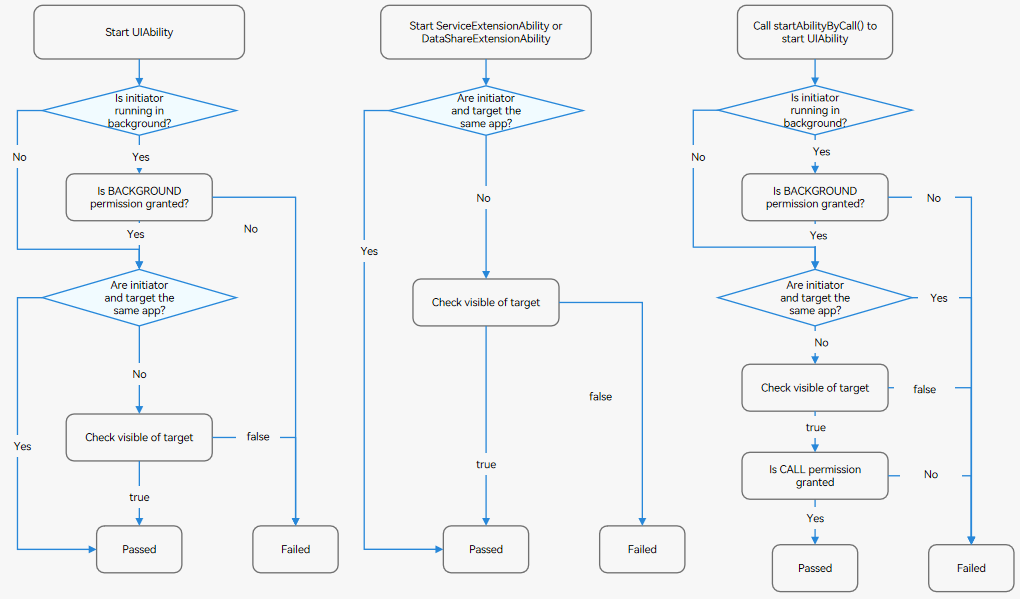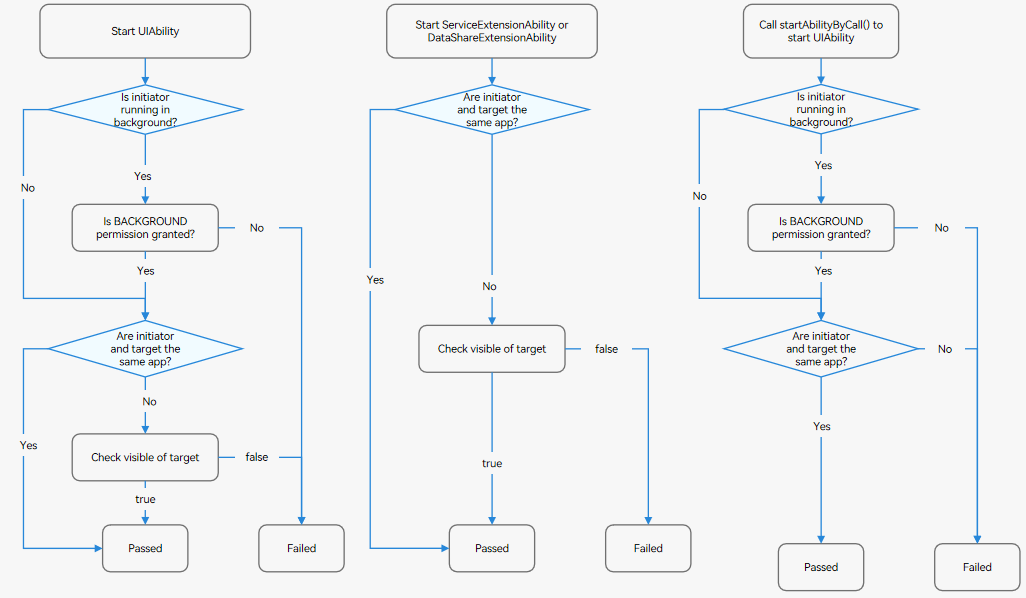harmony 鸿蒙Component Startup Rules (Stage Model)
Component Startup Rules (Stage Model)
Component startup refers to the behavior of starting or connecting to an application component.
Start the UIAbility, ServiceExtensionAbility, and DataShareExtensionAbility components. For example, you can use startAbility(), startServiceExtensionAbility(), and startAbilityByCall().
Connect to the ServiceExtensionAbility and DataShareExtensionAbility components. For example, you can use connectServiceExtensionAbility() and createDataShareHelper().
To deliver a better user experience, OpenHarmony restricts the following behavior:
A background application randomly displays a dialog box, such as an ads pop-up.
Background applications wake up each other. This type of behavior occupies system resources and increases power consumption, or even causes system frozen.
A foreground application randomly redirects to another application, for example, redirecting to the payment page of another application. This type of behavior poses security risks.
In view of this, OpenHarmony formulates a set of component startup rules, as follows:
Before starting a component of another application, verify the visible field of the target component.
- If the exported field of the target component is false, verify the ohos.permission.START_INVISIBLE_ABILITY permission.
- For details, see Component exported Configuration.
Before starting a UIAbility component of a background application, verify the BACKGROUND permission.
- An application is considered as a foreground application only when the application process gains focus or its UIAbility component is running in the foreground.
- Verify the ohos.permission.START_ABILITIES_FROM_BACKGROUND permission.
When the startAbilityByCall() method is used, verify the call permission. For details, see Using Call to Implement UIAbility Interaction and Using Cross-Device Call.
- Verify the ohos.permission.ABILITY_BACKGROUND_COMMUNICATION permission.
NOTE
Component startup control has been implemented since OpenHarmony v3.2 Release.
The new component startup rules are more strict than the original ones. You must be familiar with the new startup rules to prevent service exceptions.
Intra-Device Component Startup Rules
The rules for starting components on the same device vary in the following scenarios:
Starting the UIAbility component
Starting the ServiceExtensionAbility and DataShareExtensionAbility components
Using startAbilityByCall() to start the UIAbility component

Inter-Device Component Startup Rules
The rules for starting components on a different device vary in the following scenarios:
Starting the UIAbility component
Starting the ServiceExtensionAbility and DataShareExtensionAbility components
Using startAbilityByCall() to start the UIAbility component

你可能感兴趣的鸿蒙文章
harmony 鸿蒙Using Explicit Want to Start an Application Component
harmony 鸿蒙Using Implicit Want to Open a Website
harmony 鸿蒙AbilityStage Component Container
harmony 鸿蒙Accessing a DataAbility
harmony 鸿蒙Accessing a DataShareExtensionAbility from the FA Model
harmony 鸿蒙AccessibilityExtensionAbility
harmony 鸿蒙Common action and entities Values
- 所属分类: 后端技术
- 本文标签:
热门推荐
-
2、 - 优质文章
-
3、 gate.io
-
8、 golang
-
9、 openharmony
-
10、 Vue中input框自动聚焦